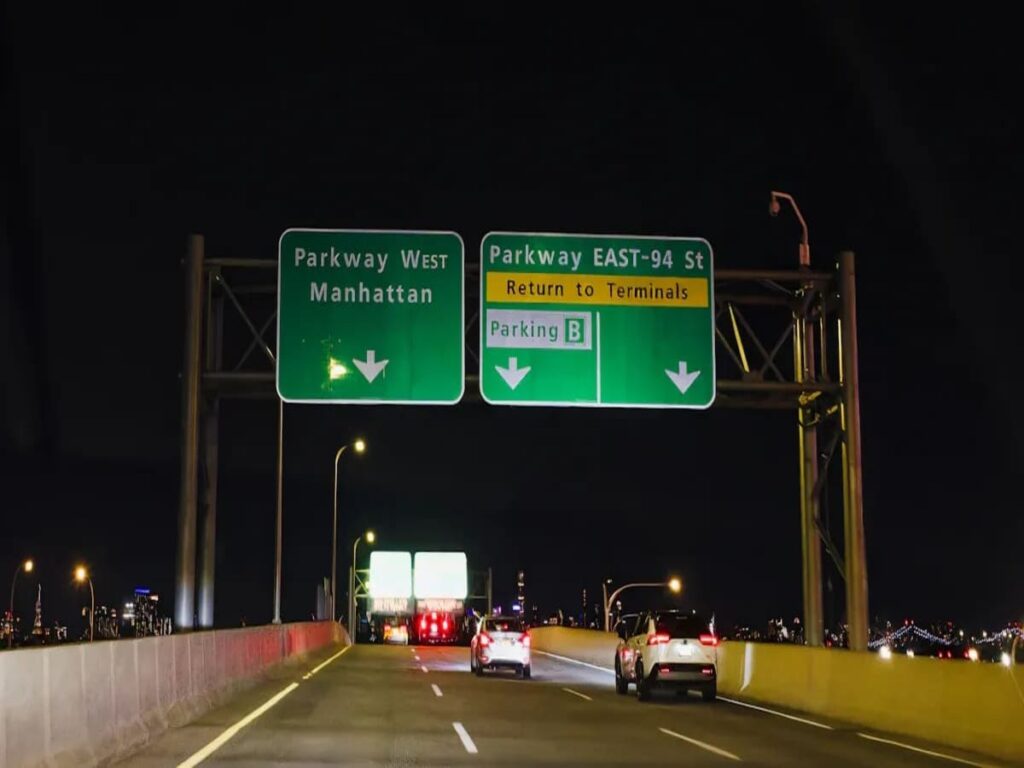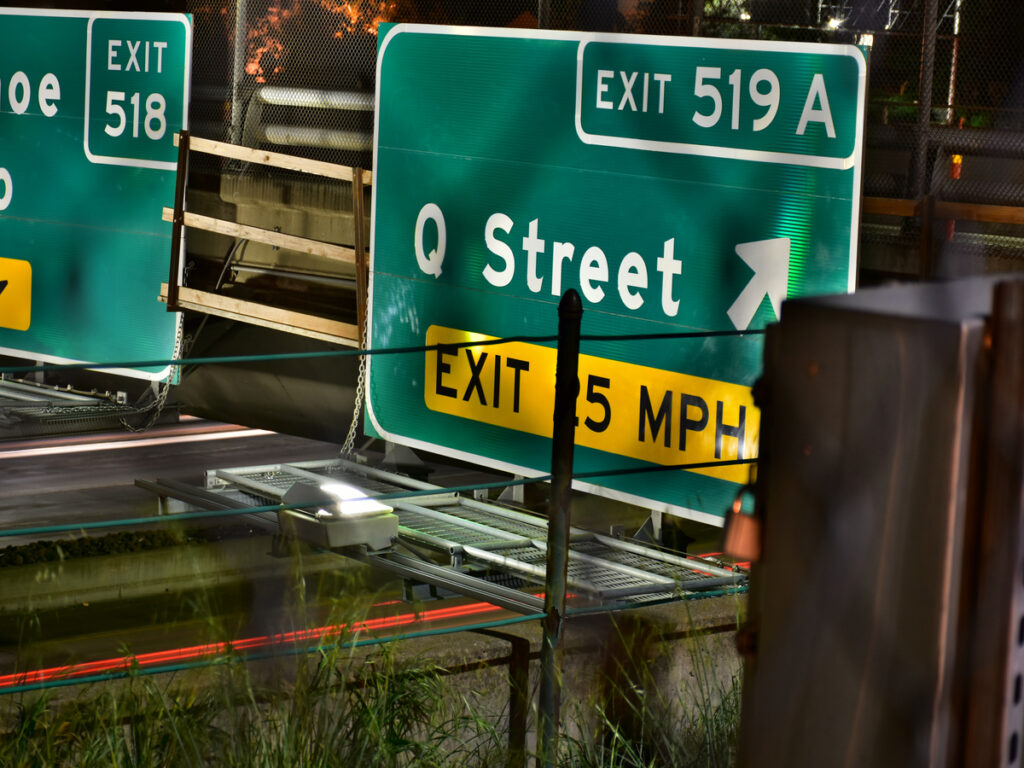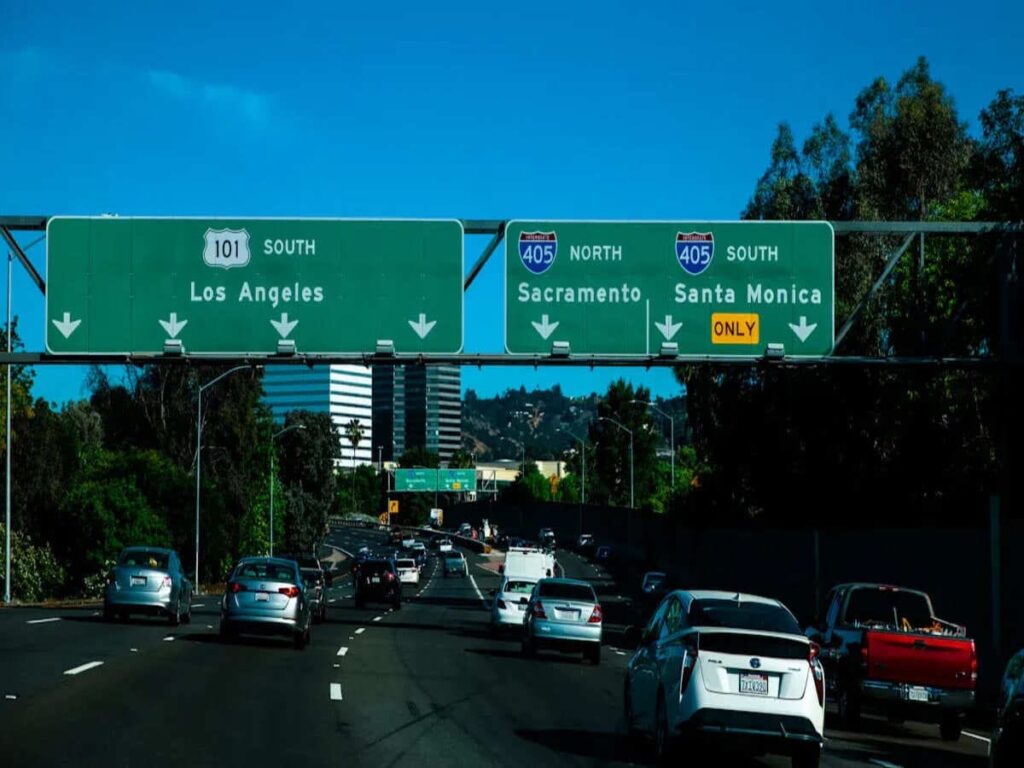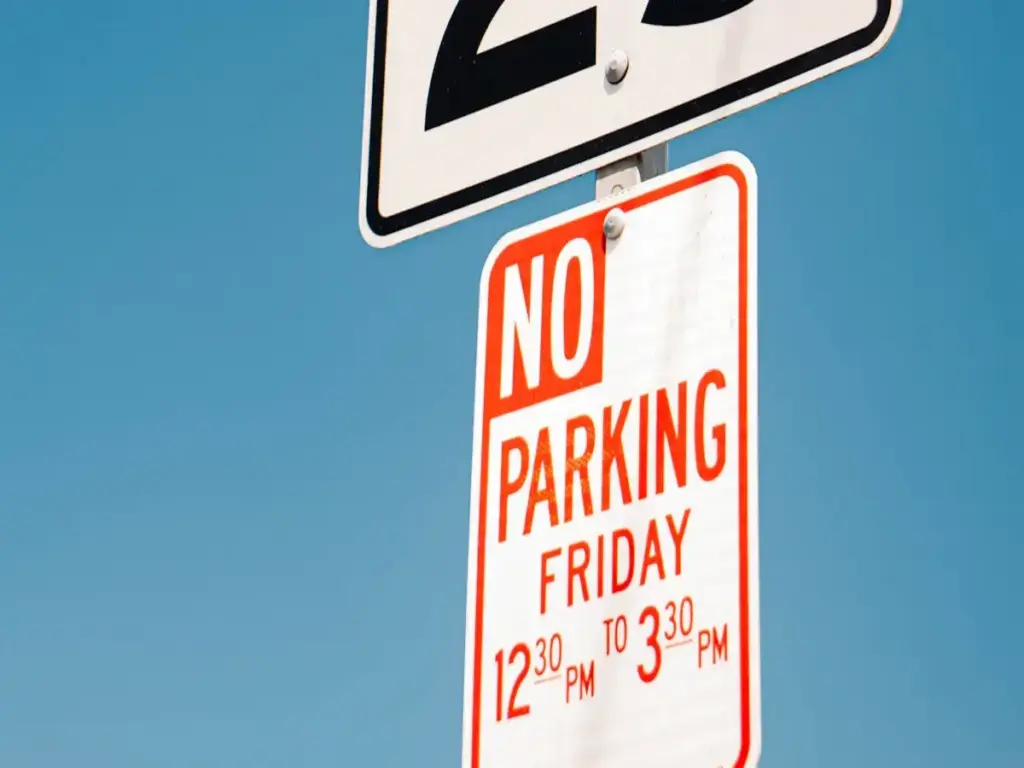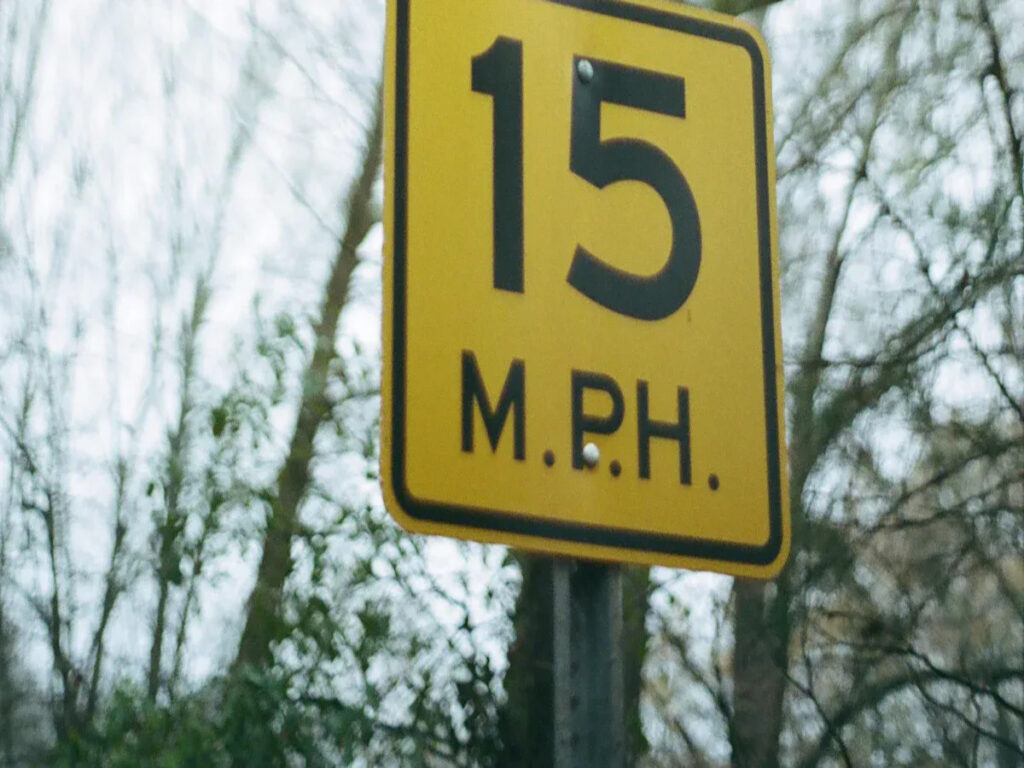
नहीं, पीली गति सीमा संकेत हर जगह नहीं पाए जाते हैं. इन यातायात संकेत आमतौर पर मुश्किल सड़कों के लिए सुझाई गई गति दिखाती है. रियल स्पीड लिमिट साइन्स आपको कानूनी गति दिखाते हैं जिसे आपको फॉलो करना चाहिए. ड्राइवर युक्तियों के रूप में पीली गति सीमा संकेत देखते हैं, कानून नहीं. जब स्थान इन संकेतों का उपयोग करते हैं, यदि वे सुरक्षा के बारे में चिंता करते हैं तो ड्राइवर उनका अनुसरण करते हैं. अंतर्राष्ट्रीय ड्राइवरों को पीली गति सीमा संकेतों और नियम संकेतों के बीच अंतर को जानने की आवश्यकता है. यह ड्राइवरों को नियमों का पालन करने और भ्रमित नहीं होने में मदद करता है.
इस विषय पर अधिक के लिए, हमारे ब्लॉग की जाँच करें: क्षेत्रीय विविधताएँ: क्या पीले रंग की गति सीमा संकेत हर जगह उपयोग किए जाते हैं?
पीली गति सीमा संकेत
सलाहकार बनाम. नियामक
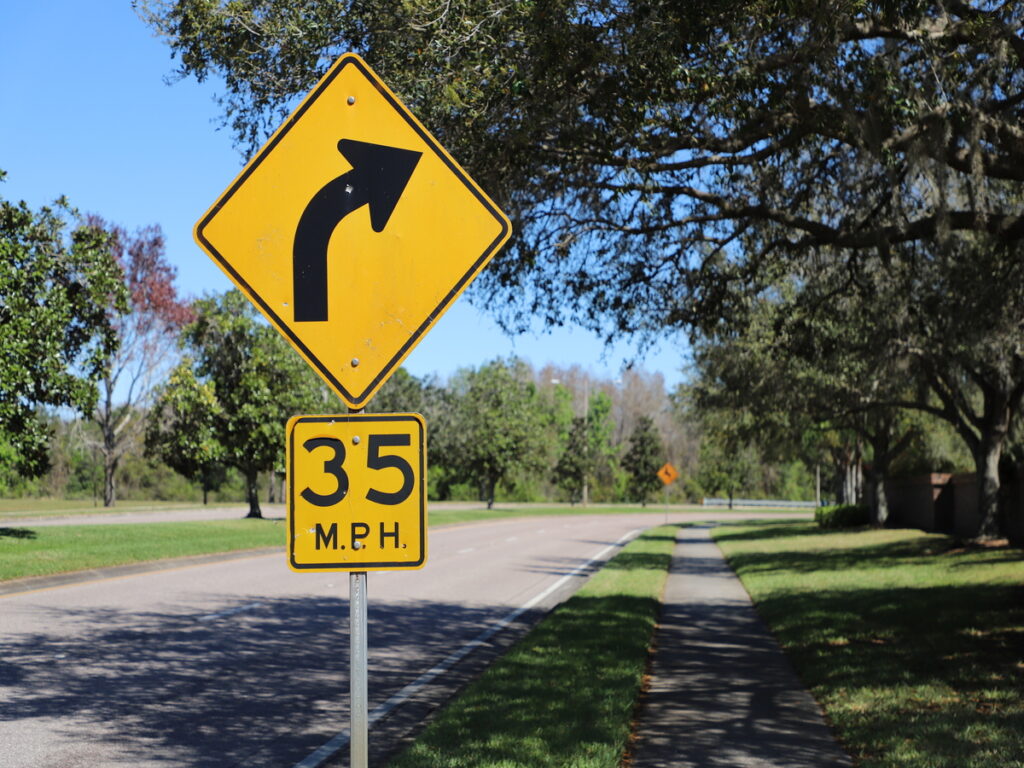
पीली गति सीमा संकेतों में सड़कों पर एक विशेष काम होता है. वे आपको कानून नहीं बताते हैं. वे ड्राइवरों के लिए एक सुरक्षित गति सुझाव देते हैं. जैसे समूह एफएचडब्ल्यूए और Ite इन संकेतों का उपयोग करने के लिए एक अच्छी गति दिखाते हैं. सड़क पर मुश्किल होने पर पोस्ट की गई सीमा से नीचे धीमा करना स्मार्ट है. ड्राइवर सलाह के रूप में पीले संकेत देखते हैं, नियमों के रूप में नहीं.
वास्तविक गति सीमा संकेतों को नियामक संकेत कहा जाता है. वे पीले लोगों से अलग दिखते हैं. इन सड़क सुरक्षा संकेतों में एक सफेद पृष्ठभूमि पर काले अक्षर हैं. वे कानूनी गति दिखाते हैं जो आप खत्म नहीं कर सकते. यदि आप इस गति से तेजी से ड्राइव करते हैं तो पुलिस टिकट दे सकती है. पीली गति सीमा संकेतों में एक पीले रंग की पृष्ठभूमि पर काले अक्षर होते हैं. वे कठिन स्थानों के लिए सावधानीपूर्वक गति का सुझाव देते हैं, जैसे तेज घटता या स्कूलों के पास. आप एक पीले रंग के संकेत से अधिक तेजी से जाने के लिए एक टिकट नहीं मिल सकते हैं. लेकिन अगर आप सलाह को अनदेखा करते हैं और असुरक्षित ड्राइव करते हैं, पुलिस इसे लापरवाह ड्राइविंग कह सकती है.
परिवहन प्राधिकरण ड्राइवरों को रंग और डिजाइन का उपयोग करके अंतर जानने में मदद करते हैं. नियामक संकेत काले का उपयोग करते हैं, सफ़ेद, और कभी -कभी नियम दिखाने के लिए लाल. पीले रंग की गति सीमा के संकेत आगे परिवर्तनों के बारे में चेतावनी देने के लिए पीले रंग का उपयोग करते हैं. यह रंग प्रणाली ड्राइवरों को यह जानने में मदद करती है कि क्या कोई साइन एक कानून है या सिर्फ चेतावनी है.
विशिष्ट उपयोग
ड्राइवर पीली गति सीमा के संकेत देखते हैं जहां सड़क तेजी से बदल जाती है या अधिक खतरनाक हो जाती है. ये संकेत तेज घटता से पहले दिखाई देते हैं, खड़ी पहाड़ियों, या ट्विस्टी रोड्स. उदाहरण के लिए, अगर कोई सड़क बहुत झुकती है, एक पीले रंग का चिन्ह ड्राइवरों को सुरक्षित रखने के लिए कम गति दिखा सकता है. निर्माण क्षेत्र सड़क पर श्रमिकों या मशीनों के बारे में चेतावनी देने के लिए पीली गति सीमा संकेतों का उपयोग करते हैं.
पीली गति सीमा संकेतों के लिए अन्य स्थान खराब दृश्यता के साथ स्पॉट हैं, जैसे कि धूमिल क्षेत्र या भारी बारिश के साथ स्थान. स्कूल जोन कभी -कभी इन संकेतों का उपयोग करते हैं ताकि ड्राइवरों को धीमा करने के लिए याद दिलाया जा सके. ग्रामीण इलाकों में, पीली गति सीमा के संकेत जानवरों को पार करने या सड़क में अचानक बूंदों के बारे में चेतावनी दे सकते हैं.
बख्शीश: हमेशा पीली गति सीमा संकेतों के लिए देखें, भले ही वे कानून न हों. ये संकेत ड्राइवरों को क्रैश से बचने और सभी को सुरक्षित रखने में मदद करते हैं.
वास्तविक गति सीमा संकेत, जो नियामक हैं, सामान्य सड़कों के लिए शीर्ष गति निर्धारित करें. पीली गति सीमा संकेत सलाह देते हैं जब सड़क को अतिरिक्त देखभाल की आवश्यकता होती है. ड्राइवरों को इन संकेतों को महत्वपूर्ण चेतावनी के रूप में मानना चाहिए, विशेष रूप से तेज घटता या अन्य खतरों पर. पीले रंग के चिन्ह पर गति के बाद असुरक्षित ड्राइविंग को रोक सकता है और दुर्घटनाओं की संभावना को कम कर सकता है.
क्षेत्रीय मतभेद
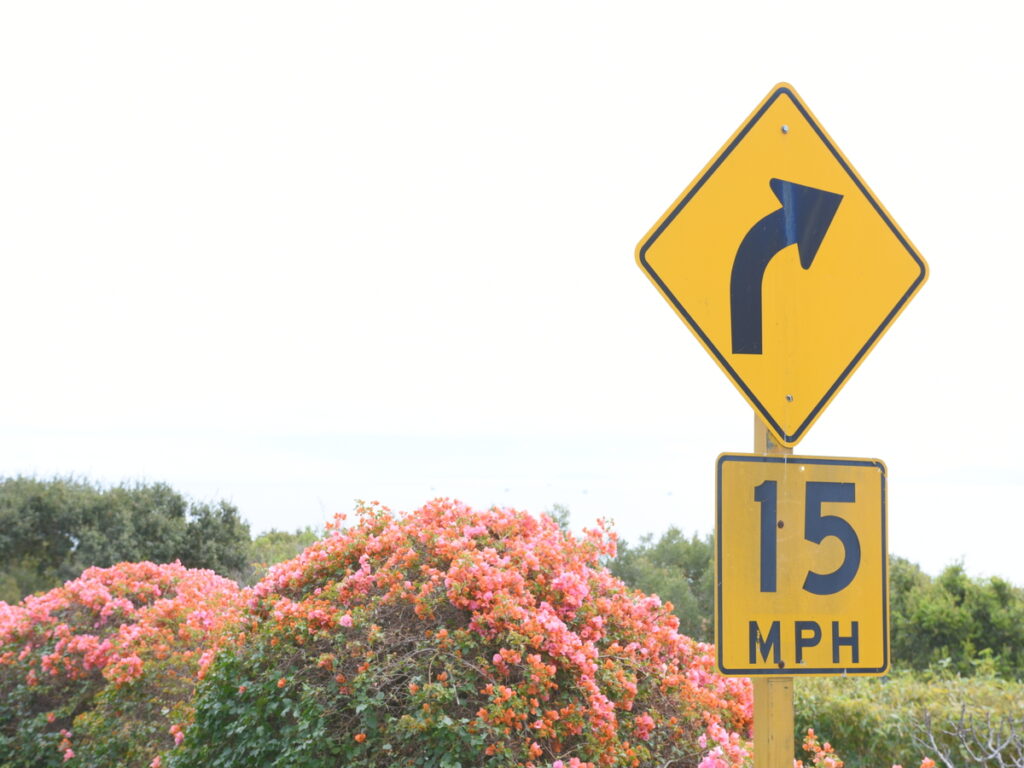
उत्तरी अमेरिका
उत्तरी अमेरिका में पीली गति सीमा संकेत आम हैं. संयुक्त राज्य अमेरिका इन संकेतों को तेज घटता और स्कूलों के पास रखता है. आप उन्हें निर्माण स्थलों पर भी देखते हैं. ड्राइवर रैंप से पहले राजमार्गों पर पीले संकेतों को स्पॉट करते हैं. घुमावदार सड़कों में अक्सर ये संकेत भी होते हैं. कनाडा पीले सलाहकार गति सीमा संकेतों का भी उपयोग करता है. ब्रिटिश कोलंबिया जैसे प्रांतों ने उन्हें पहाड़ी सड़कों पर रखा. वे ग्रामीण क्षेत्रों में भी उनका उपयोग करते हैं. ये संकेत ड्राइवरों को बताते हैं कि सुरक्षा के लिए कब धीमा करना है. अधिकांश ड्राइवर जानते हैं कि पीले संकेत सलाह देते हैं, नियम नहीं. ड्राइवर सड़क और मौसम के आधार पर इन संकेतों का पालन करते हैं. पुलिस पीले संकेतों को अनदेखा करने के लिए टिकट नहीं देती है. लेकिन अगर कोई दुर्घटना होती है, इसे लापरवाह ड्राइविंग कहा जा सकता है.
यूरोप
यूरोप में कई अलग -अलग गति सीमा संकेत हैं. यूनाइटेड किंगडम अस्थायी गति सीमाओं के लिए पीले या एम्बर संकेतों का उपयोग करता है. ये ज्यादातर निर्माण क्षेत्रों में हैं. स्थायी गति सीमा सफेद संकेतों पर रहें. जर्मनी निर्माण क्षेत्रों में पीले सलाहकार संकेत डालता है. आप उन्हें ट्रैफ़िक बदलने वाली सड़कों पर भी देखते हैं. ऑटोबान पर, पीले संकेत बारिश में सुरक्षित गति का सुझाव देते हैं. भारी यातायात भी पीले संकेत ला सकता है. फ्रांस और इटली तेज मोड़ के लिए पीले संकेतों का उपयोग करते हैं. पर्वत सड़कों और व्यस्त क्षेत्रों में ये संकेत भी हैं. पीले संकेतों के साथ ड्राइवर का अनुपालन जगह से बदल जाता है. कुछ क्षेत्र दूसरों की तुलना में अधिक पीले संकेतों का उपयोग करते हैं. अधिकांश यूरोपीय देश सलाह के रूप में पीली गति सीमा संकेतों का इलाज करते हैं.
एशिया और ऑस्ट्रेलिया
एशिया और ऑस्ट्रेलिया के पास पीले संकेतों का उपयोग करने के अपने तरीके हैं. जापान पहाड़ी सड़कों पर पीली गति सीमा के संकेत डालता है. खराब मौसम स्पॉट भी ये संकेत मिलते हैं. ड्राइवर निर्माण क्षेत्रों में और स्कूलों के पास पीले संकेत देखते हैं. चीन शहरों में अधिक पीले सलाहकार संकेतों का उपयोग कर रहा है. व्यस्त सड़कों में भी ये संकेत हैं. वे ड्राइवरों को सुरक्षा के लिए गति को समायोजित करने में मदद करते हैं. ऑस्ट्रेलिया ग्रामीण राजमार्गों पर पीली गति सीमा के संकेत डालता है. तटीय सड़कों और तेज घटता उनके पास भी है. शहरों में, ड्राइवर अधिक सफेद नियामक संकेत देखते हैं. ड्राइवर स्थानीय आदतों और सड़क डिजाइन के आधार पर पीले संकेतों का पालन करते हैं. जब वे पीले रंग का चिन्ह देखते हैं तो ज्यादातर ड्राइवर धीमा हो जाते हैं. खतरनाक धब्बे ड्राइवरों को अधिक ध्यान देते हैं.
लैटिन अमेरिका, अफ्रीका, मध्य पूर्व
लैटिन अमेरिका, अफ्रीका, और मध्य पूर्व विशेष तरीकों से पीली गति सीमा संकेतों का उपयोग करता है. मेक्सिको पहाड़ी सड़कों और ग्रामीण राजमार्गों पर पीले संकेत डालता है. निर्माण क्षेत्रों में ये संकेत भी हैं. ब्राजील निर्माण क्षेत्रों में पीले संकेतों का उपयोग करता है. बाढ़ या भूस्खलन वाले क्षेत्र उन्हें भी प्राप्त करते हैं. दक्षिण अफ्रीका खड़ी पहाड़ियों पर पीले सलाहकार संकेत डालता है. तेज घटता भी ये संकेत हैं. सऊदी अरब रेगिस्तानी सड़कों पर पीले संकेतों का उपयोग करता है. सैंडस्टॉर्म वाले स्थानों को ये संकेत भी मिलते हैं. पीली गति सीमा संकेतों के साथ ड्राइवर अनुपालन बदल सकता है. कुछ ड्राइवर सलाह का बारीकी से पालन करते हैं. अन्य अपने निर्णय का उपयोग करते हैं. सड़क की स्थिति और मौसम प्रभावित करते हैं कि ये संकेत कितनी बार दिखाते हैं.
टिप्पणी: पीली गति सीमा संकेतों में क्षेत्रीय विविधताएं अंतरराष्ट्रीय ड्राइवरों को भ्रमित कर सकती हैं. नए देश में ड्राइविंग करने से पहले हमेशा स्थानीय नियमों की जांच करें.
कानूनी स्थिति
सलाहकार गति सीमा संकेत
सलाहकार गति सीमा संकेत ड्राइवरों को सुरक्षित रहने में मदद करते हैं. वे कानून निर्धारित नहीं करते हैं. संयुक्त राज्य अमेरिका में, ये संकेत केवल एक सुरक्षित गति का सुझाव देते हैं. The समान यातायात नियंत्रण उपकरणों पर मैनुअल (MUTCD) इंजीनियरों को पहले सड़क की जांच करनी चाहिए. ट्रैफ़िक संकेत एक गति दिखाते हैं जो अधिकांश ड्राइवरों के लिए सुरक्षित महसूस करता है. यह घटता पर या खतरों के पास महत्वपूर्ण है. ड्राइवरों को पीले सलाहकार संकेत पर संख्या से अधिक तेजी से जाने के लिए टिकट नहीं मिलता है. ये संकेत मार्गदर्शन देते हैं, नियम नहीं. अधिकांश देश इस विचार का उपयोग करते हैं. ड्राइवर सलाह के रूप में पीले संकेत देखते हैं, आज्ञा नहीं.
टिप्पणी: कोई भी देश सख्त कानूनों के रूप में पीले सलाहकार गति सीमा संकेतों का इलाज नहीं करता है. वे लगभग हमेशा सुझाव हैं, आवश्यकता नहीं.
प्रवर्तन और देयता
पुलिस सफेद नियामक संकेतों की तरह पीले सलाहकार गति सीमा संकेतों को लागू नहीं करती है. ड्राइवरों को केवल एक पीले रंग के चिन्ह पर गति पारित करने के लिए एक तेज टिकट नहीं मिल सकता है. लेकिन इन संकेतों को अनदेखा करने से अभी भी समस्याएं हो सकती हैं. यदि कोई ड्राइवर सलाहकार गति की तुलना में बहुत तेजी से बढ़ता है, बीमा कंपनियां या अदालतें कह सकती हैं कि ड्राइवर ने लापरवाही से काम किया. जर्मनी में, उदाहरण के लिए, राजमार्गों पर सलाहकार गति एक कानून नहीं है. लेकिन अगर कोई दुर्घटना उस गति से ऊपर होती है, ड्राइवर को अधिक दोष का सामना करना पड़ सकता है. ऑस्ट्रेलिया एक समान प्रणाली का उपयोग करता है. सलाहकार गति पर जाने से बीमा दावों को प्रभावित किया जा सकता है, भले ही यह कोई अपराध न हो.
कुछ क्षेत्रों में विशेष नियम हैं. यदि कोई शहर या राज्य उचित अध्ययन के बिना एक पीला चिन्ह डालता है, वे एक दुर्घटना के बाद मुकदमों का सामना कर सकते थे. इसका मतलब है कि सलाहकार गति सीमा संकेतों में कानूनी बल नहीं है. लेकिन वे अभी भी अदालत में और बीमा के लिए मायने रखते हैं.
चमकती गति सीमा संकेत और विविधताएं
अस्थायी और इलेक्ट्रॉनिक संकेत
चमकती गति सीमा संकेत सड़कों को सुरक्षित रखने में मदद करते हैं जब चीजें बदलती हैं. ये संकेत ड्राइवरों का ध्यान आकर्षित करने के लिए उज्ज्वल रोशनी का उपयोग करते हैं. शहरों ने निर्माण के पास चमकती गति सीमा संकेत डाले, स्कूलों, और ऐसे स्थान जहां सड़कें तेजी से बदलती हैं. जब श्रमिक सड़कों को ठीक करते हैं या नई लेन बनाते हैं, ये संकेत ड्राइवरों को धीमा करने के लिए कहते हैं. ड्राइवर श्रमिकों और मशीनों के लिए बाहर देखना जानते हैं.
स्कूल ज़ोन बच्चों को सुरक्षित रखने के लिए चमकती गति सीमा संकेतों का उपयोग करते हैं. विशेष घटनाओं या आपात स्थितियों के दौरान, ये संकेत अधिक लोगों के चलने के बारे में चेतावनी देते हैं. चमकती रोशनी दूर से स्पॉट करने के लिए संकेतों को आसान बनाती है. ड्राइवरों के पास सभी को धीमा करने और सभी को सुरक्षित रखने का समय है. कुछ चमकती गति सीमा संकेत केवल निश्चित समय पर चालू करते हैं, जैसे स्कूल से पहले और बाद में. यह ड्राइवरों को बताता है कि कब अतिरिक्त सावधानी बरतनी है.
कई स्थान इलेक्ट्रॉनिक फ़्लैशिंग गति सीमा संकेतों का उपयोग करते हैं. ये संकेत मौसम की गति सीमा को बदल सकते हैं, ट्रैफ़िक, या सड़क का काम. अगर बारिश होती है और सड़कें फिसलन भरी हो जाती हैं, संकेत कम गति से चमकता है. व्यस्त स्थानों में, चमकती गति सीमा संकेत गति बदलकर यातायात को नियंत्रित करने में मदद करते हैं. इलेक्ट्रॉनिक संकेत गति सीमा के साथ संदेश या प्रतीक दिखा सकते हैं. ड्राइवर स्पष्ट निर्देश देखते हैं और तेजी से प्रतिक्रिया कर सकते हैं.
बख्शीश: ड्राइवरों को हमेशा चमकते गति सीमा संकेतों पर नजर रखनी चाहिए. जब सड़कें बदलती हैं तो ये संकेत दिखाई देते हैं और दुर्घटनाओं को रोकने में मदद करते हैं.
संक्रमण क्षेत्र
संक्रमण क्षेत्र वे स्थान हैं जहां गति सीमा बदलती है. चमकती गति सीमा संकेत ड्राइवरों को सुरक्षित रूप से गति धीमी करने में मदद करते हैं. जब ड्राइवर धीमी सड़क के लिए तेज़ राजमार्ग छोड़ते हैं, चमकती गति सीमा संकेत नई गति के बारे में चेतावनी देते हैं. ये संकेत टोल बूथों से पहले दिखाई देते हैं, स्कूल क्षेत्र, या व्यस्त क्रॉसिंग.
कुछ संक्रमण क्षेत्र तेज घटता या खड़ी पहाड़ियों के लिए चमकती गति सीमा संकेतों का उपयोग करते हैं. चमकती रोशनी का मतलब है कि आगे की सड़क को अतिरिक्त देखभाल की आवश्यकता है. ड्राइवर संकेतों को देखते हैं और खतरे से पहले धीमा करना जानते हैं. भारी यातायात में, चमकती गति सीमा संकेत कारों को बेहतर तरीके से स्थानांतरित करने में मदद करते हैं. वे अचानक स्टॉप और कम दुर्घटना जोखिमों को रोकते हैं.
नीचे दी गई एक तालिका से पता चलता है कि फ्लैशिंग स्पीड लिमिट साइन्स का उपयोग कहां किया जाता है:
| जगह | उद्देश्य |
|---|---|
| स्कूल क्षेत्र | बच्चों और पैदल यात्रियों की रक्षा करें |
| निर्माण क्षेत्र | श्रमिकों और उपकरणों के बारे में चेतावनी |
| संक्रमण क्षेत्र | गति को गति देने के लिए सतर्क ड्राइवर |
| खतरनाक कर्व्स | सावधानी और धीमी गति की सलाह दें |
चमकती गति सीमा संकेत ड्राइवरों को स्पष्ट चेतावनी देते हैं. वे सभी को सुरक्षित रखने और यातायात को बेहतर बनाने में मदद करते हैं.
पीली गति सीमा संकेत सलाह देते हैं, नियम नहीं, और हर जगह नहीं हैं. ड्राइवर देखते हैं कि अलग -अलग स्थान उन्हें अलग -अलग तरीकों से उपयोग करते हैं. यात्रियों को प्रत्येक क्षेत्र में यातायात कानूनों को सीखने की आवश्यकता है. उन्हें हमेशा नियामक संकेतों का पालन करना चाहिए. सुरक्षा के लिए चमकती गति सीमा संकेत देखना महत्वपूर्ण है. ये संकेत स्कूल क्षेत्रों में दिखाई देते हैं. ड्राइवर उन्हें निर्माण क्षेत्रों में भी देखते हैं. यात्री उन्हें राजमार्गों पर नोटिस करते हैं. आप उन्हें तेज घटता के पास पा सकते हैं. कभी-कभी, आप उन्हें खराब मौसम के दौरान देखते हैं. संक्रमण क्षेत्रों में, ये संकेत ड्राइवरों को यह जानने में मदद करते हैं कि क्या करना है. ड्राइवर खतरों के आसपास सुरक्षित रहने के लिए चमकती गति सीमा संकेतों का उपयोग करते हैं.
ड्राइवर जो जानते हैं कि फ्लैशिंग स्पीड लिमिट साइन्स का मतलब नई सड़कों पर सुरक्षित विकल्प बनाते हैं.
अक्सर पूछे जाने वाले प्रश्न
चमकती गति सीमा संकेत क्या हैं?
चमकती गति सीमा संकेत ड्राइवरों का ध्यान आकर्षित करने के लिए रोशनी का उपयोग करें. ये संकेत तब दिखाते हैं जब ड्राइवरों को सुरक्षा के लिए धीमा करने की आवश्यकता होती है. लोग उन्हें स्कूलों के पास देखते हैं, निर्माण क्षेत्र, और व्यस्त सड़कें. रोशनी ड्राइवरों को तुरंत गति परिवर्तन को नोटिस करने में मदद करती है.
ड्राइवर आमतौर पर फ्लैशिंग स्पीड लिमिट साइन्स कहां देखते हैं?
ड्राइवर अक्सर स्कूल क्षेत्रों में चमकती गति सीमा संकेत देखते हैं, सड़क के पास, और तेज घटता पर. शहर इन संकेतों को रखते हैं जहां अतिरिक्त सावधानी की आवश्यकता होती है. संकेत गति या सड़क की स्थिति में बदलाव के बारे में चेतावनी देते हैं. जब वे रोशनी देखते हैं तो ड्राइवर धीमा करना जानते हैं.
क्या चमकती गति सीमा संकेतों का मतलब हमेशा गति सीमा बदल गई है?
चमकती गति सीमा संकेत कभी -कभी थोड़े समय के लिए कम गति दिखाते हैं. संकेत बच्चों के बारे में चेतावनी दे सकते हैं, कार्यकर्ता, या खराब मौसम. ड्राइवरों को हमेशा दिखाए गए गति का पालन करना चाहिए जब रोशनी चमकती है. संकेत विशेष स्थितियों के दौरान सभी को सुरक्षित रखने में मदद करते हैं.
हर देश में उपयोग किए जाने वाले स्पीड लिमिट साइन्स चमकते हैं?
हर देश चमकती गति सीमा का उपयोग नहीं करता है उसी तरह. कुछ देश शहरों और स्कूलों में अक्सर उनका उपयोग करते हैं. अन्य लोग केवल विशेष घटनाओं या आपात स्थितियों के लिए उनका उपयोग करते हैं. ड्राइवरों को एक नई जगह पर ड्राइविंग करने से पहले स्थानीय नियम सीखना चाहिए.
क्या ड्राइवरों को चमकती गति सीमा संकेतों को अनदेखा करने के लिए टिकट मिल सकता है?
पुलिस टिकट दे सकती है यदि ड्राइवर चमकती गति सीमा संकेतों को अनदेखा करते हैं जो कानूनी गति सीमा दिखाते हैं. कुछ स्थानों पर, संकेत केवल चेतावनी हैं. ड्राइवरों को हमेशा धीमा करना चाहिए जब वे दुर्घटनाओं से बचने और कानून का पालन करने के लिए चमकती गति सीमा संकेत देखते हैं


